Self-Sustainable Soup!
A fun introduction to self-sustainable systems
Follow this pictorial journey with me as I put together all the elements of a simple cup of soup on a self-sustainable land-hold.
To start with... the rain falls on my roof running into guttering via a rain-head filter that removes all debris and dust.
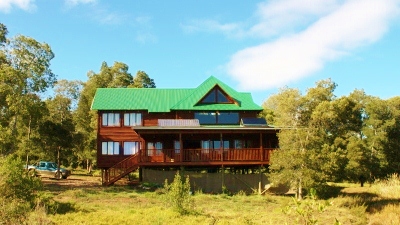 |
My house - that's a whole lot of roof to collect rain on! |
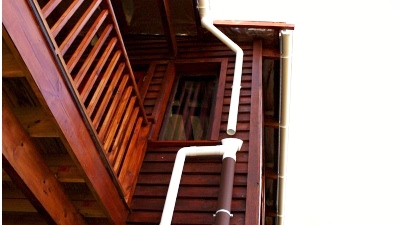 |
The rainhead filter - inline with the gutter downpipe. |
|
Pure, clean rainwater is collected in my storage tanks and the first element is available: I have water. |
|
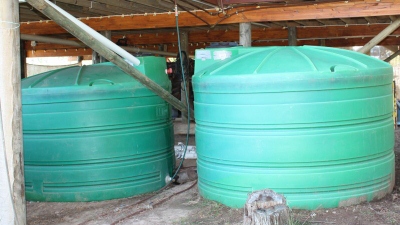 |
Rain water collection tanks |
|
The sun shines on my roof striking the photovoltaic electrical panel array driving electrons into a cycle which charges a bank of batteries. Using an inverter to power my house: I have electricity. |
|
 |
My house, showing photo-voltaic (electicity) solar collection panels on the left and thermal (hot water) collection panels on the right. |
 |
The photo-voltaic panels charge these batteries. This is quite a small battery array which I will be increasing in size as I can afford to do so. |
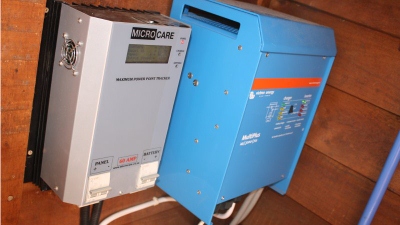 |
The blue box is the inverter which supplies 220V AC power to the house from the batteries. The silver box is a charge controller that makes sure the electricity from the panels always optimally charges the batteries without damage. |
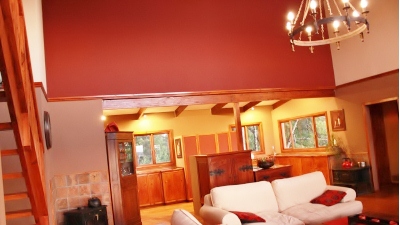 |
When I switch the house lights on at night... it's actually sunshine coming out of the globes! |
|
Everywhere around my land-hold we are fighting back an invasion of alien trees: blackwattle and blackwood. These are aggressively cut down and we encourage the natural "fynbos" and afromontane forest to re-establish. |
|
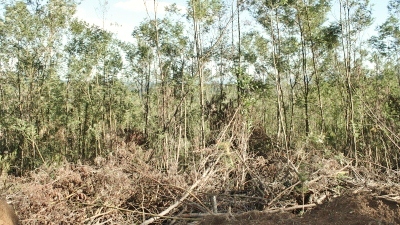 |
BEFORE: land choked with invader species. These blackwattle trees crowd out the natural vegetation and turn the most beautiful landscape into a wasteland has no diversity and supports no indigenous animals |
 |
AFTER: Natural indigenous landscape re-establising itself. The "fynbos" biome is by far the most ecologically diverse in the whole world. It is unbelievably precious and needs to be protected. The indigenous forests (which you can see in the distance) will also re-establish eventually. |
|
A very positive by-product of our efforts is an abundant over-supply of wood which means I have a huge woodpile that gets bigger faster than I can ever use it. Certainly: I have firewood! |
|
 |
This huge woodpile under my house is just one of the many on my land. The piles grow faster than I can ever use them! It is a wonderful respource that comes as a free by-product of the alien clearing that we are doing. |
|
Outside, in my garden, I have a raised-bed vegetable garden where vegetables are grown on purely organic principals. Not a single harmful, poisonous substance is used and no chemicals are added. But a profuse abundance of vegetables are grown: I have food. |
|
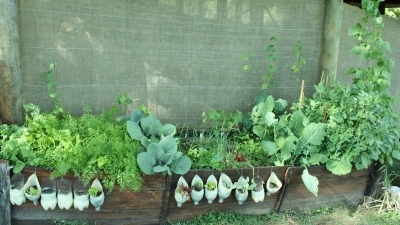 |
One of our raised-bed veggie garden boxes. We have very heavy clay soil here which is not ideal for most veggies. By making boxes like this we can ensure that each box has the ideal soil type for growing the crops we will be planting there. |
| I harvest some vegetables and bring the basin of produce up to my kitchen. I put the veggies in my prep-bowl and open the tap to rinse them. I don’t need to aggressively wash them, of course, because there is nothing harmful on them. It’s just to get the earth off. As I open the tap, this causes the water to flow resulting in a drop in pressure in the water-mains pipes which causes a pump to switch on. The pump is connected electrically to my batteries and plumbed to my water storage tanks. Essentially I am pumping rainwater with sunshine!
|
|
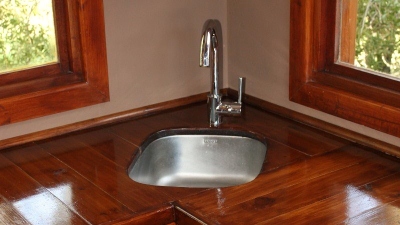 |
The prep bowl - where rainwater is pumped with sunshine! |
|
This all happens in a blink and so I don’t have to wait at all. The prep-bowl fills with water and I rinse the veggies. When they are clean I pull the plug and this water runs into the “grey water” sewerage system which leads directly to an artificial wetland that I have built a little down-slope from my home. The wetland is natures way of cleaning water. It is not only completely odourless but also a very attractive and completely natural and indigenous feature of the landscape. |
|
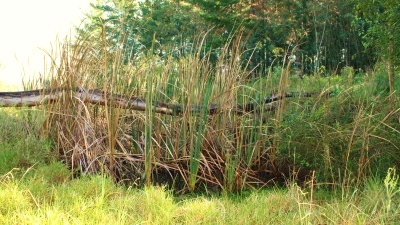 |
The wetland |
|
Water that is nutrient rich but biologically safe and odourless leaves the wetland and flows into a lily pond for storage. This is safe and beneficial to use for irrigation. |
|
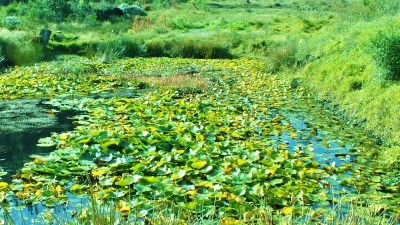 |
The lily pond, full of water to be used for irrigation. In summer when the lilies flower and the leaves are more lush, it really is very attractive. |
|
But back to the vegetables. They are now rinsed clean and ready to be processed. The peels, the off-cuts, the “tops”, the leaves… these all go to my worm farm. The worm-farm is an arrangement of containers in which one can place any waste vegetable and plant matter. A special type of earth-worm (the red-wriggler) is highly adapted to turning this vegetable matter into the very highest-quality compost material in record time. |
|
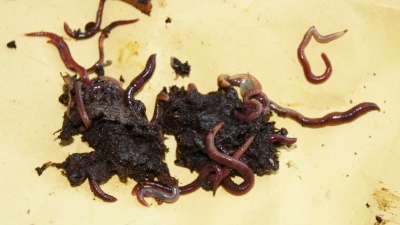 |
Red wriggler worms. These little critters really are wonder-workers. |
|
One also collects a fantastic liquid fertiliser called “worm tea” from the bottom of the worm farm. And so I have the finest, purely organic fertiliser – add this to the irrigation water from the lily pond and the vegetable garden thrives!
But again back to the vegetables… The parts that aren’t going to the worms are placed in a pot. The pot placed under a kitchen tap and more rainwater is pumped with sunshine until the pot is full.
I put the pot on my old-fashioned wood-burning cook-stove and load up the firebox with wood from my woodpile. The wood burner is a lot less trouble to work with than city-folks might imagine. Its quite a lot of fun actually. As it heats up it complements the efforts of my solar-geyser up on the roof to keep my geyser full of piping hot water. It also gently warms my home. And, of course, in time, it brings the pot of vegetables to the boil. |
|
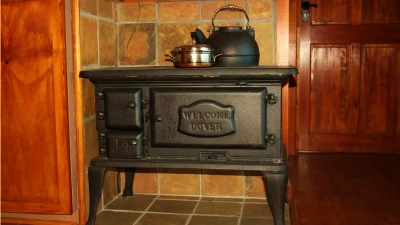 |
The wood-burning water-heater/ cooker/ room-warmer! |
|
In due course I have the most delicious bowl of hot vegetable soup. This is loaded into the resident humanbeing where it fuels creativity and imagination which is converted to words sold on the internet to earn an income. |
|
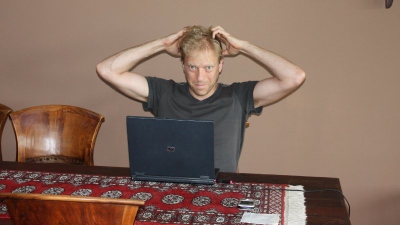 |
The resident human busy converting food into creativity |
|
That income (I don’t need a lot) is used to buy the few things that I need a long the way that don’t come as a gift from the land or from life.
Such is the lifecycle of a cup of soup in a self-sustainable land-hold! |
|






